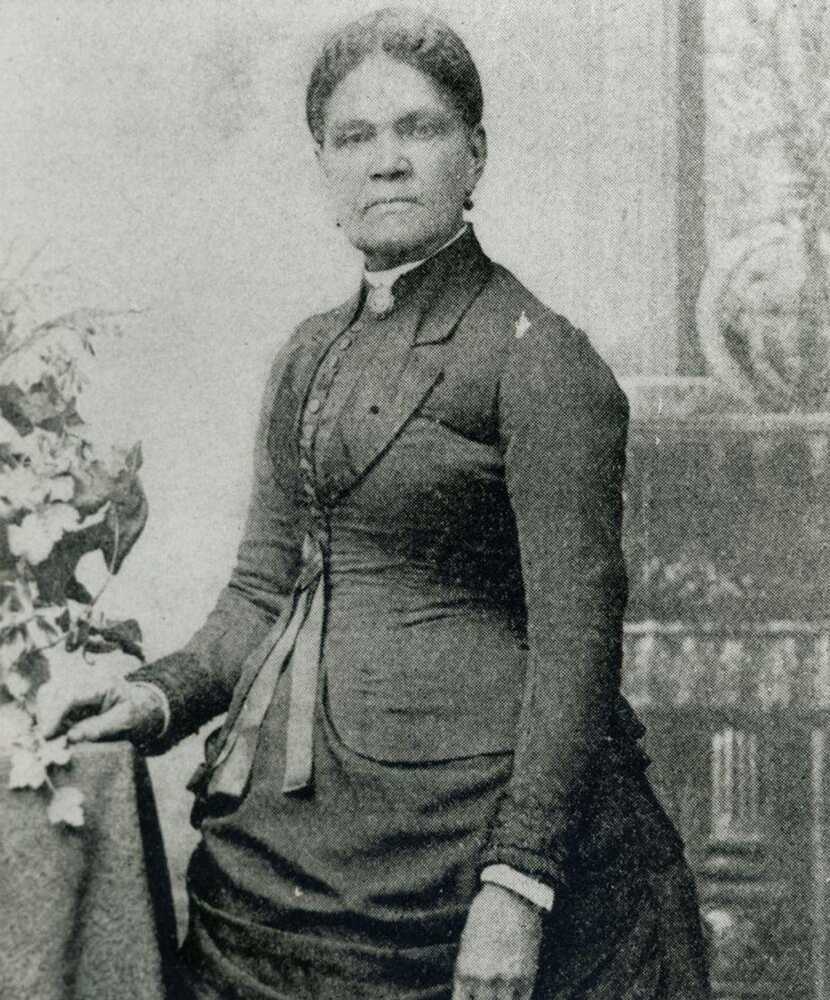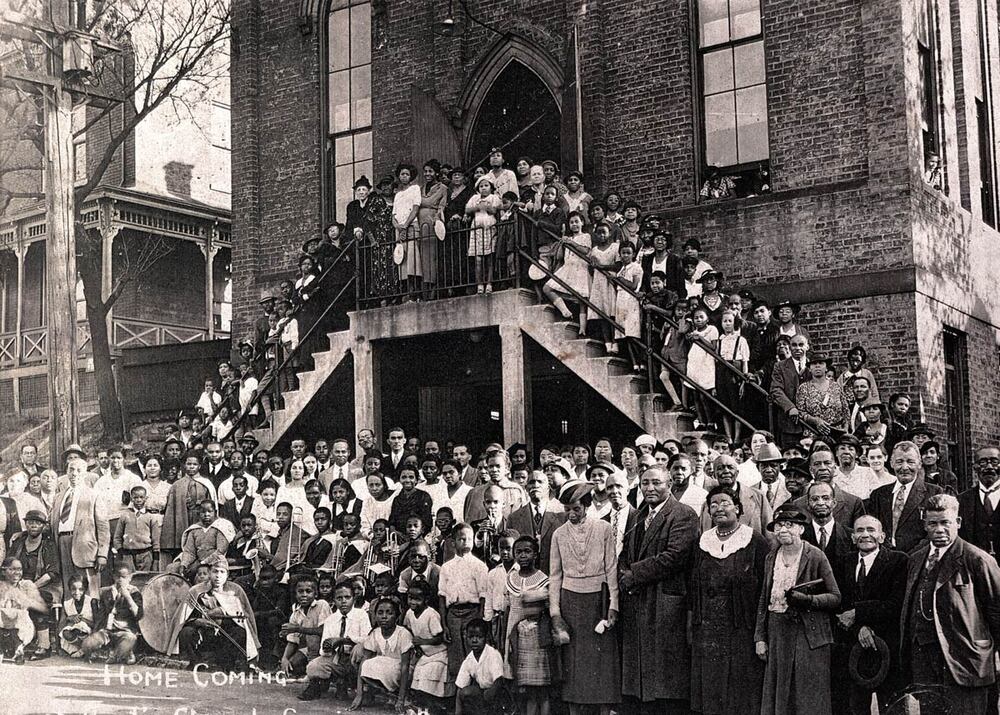Sarah Mayrant Walker Fossett
A Black woman who built an empire, changed society, and fostered community.

Discover how Sarah’s scary experience with a streetcar changed Cincinnati forever.
Early Life
Born in Charleston, South Carolina* to Rufus and Judith on 26 June 1826, Sarah, a “noble, lovable character,” had been born enslaved. As a young girl, Sarah was sent to New Orleans. There, she studied under a French hair specialist the art of hair and scalp treatment and hair goods manufacturing and application.
In the 1840s, Cincinnatian Abraham Evan Gwynne brought Sarah to Cincinnati around the time of his daughter Alice Claypool Gwynne’s birth. Alice, Gloria Vanderbilt’s grandmother and Anderson Cooper’s great grandmother, would later build her own dynasty. But this is Sarah’s story dynastic story. Through the Gwynne family’s influence and connections (including the Storers), Sarah networked to build her own hair salon empire for the rich as the best hair stylist in Cincinnati.
A Legacy of Abolitionism
On 28 September 1854, Sarah, 28, married a 39-year old white washer and caterer by the name of Peter Farley Fossett, who had been born into enslavement at Thomas Jefferson’s Monticello, along with his entire family. They were true equals in marriage and equals as business operators in their own companies, having separate finances. Sarah never learned to read like her husband had in his youth enslaved by Thomas Jefferson. That never stopped her from being an absolute success, but Peter taught her to read and write over the years, which would only make her more successful.
Peter and Sarah, living at 46 Race St. in Mary Liverpool’s tenement, were closely associated with Levi Coffin and others in the Underground Railroad. Peter served as one of Coffin’s lieutenants, being a stop for runaways before sending them to his home. Sarah and Peter lived and worked under dire and dangerous circumstances, especially as Black people who didn’t have the luxury of simply paying a fine like white people would for harboring fugitive slaves.
The couple attended church at Baker Street, now called Union Baptist Church. There, Peter served as clerk and trustee. He surveyed and bought the land for the church cemetery on the west side, which is now known as the Union Baptist Cemetery, where they both are buried.
Integrating the Streetcar
One day Sarah was late to an appointment to fix the hair for a bride’s wedding and decided to take the Third-street line streetcar to get there faster. When it stopped near the Burnet House, and a white lady stepped off. Sarah tried ascending onto the platform but was stopped by conductor. He tried to push her off, but Sarah held onto the rails as the horses kept moving on. Sarah gripped tightly, fearing of the fall while in motion, while the conductor battered her hands to remove her. She tried to bite his knuckles as he tried to pry her hands off. Eventually, after three blocks, she let go, suffering injuries, laid up for three days after. Sarah sued the PRC, claiming $1,000 in damages. The PRC claimed Sarah never got on the platform (so they aren’t responsible for injury on their property) and claimed that the car was already in motion when she jumped to hold onto the rails. She didn’t receive the $1,000; however, she did receive $65 for being refused passage.
As a result of the case, Black women and children were legally allowed to ride inside, while Black men could ride outside on the platform. Two years later, that law was used in Isaac Young’s case against the Cincinnati Streetcar Company, where the judge ruled that the company went against city law by denying him passage. Judge Bellamy Storer, who knew Sarah and her integrity through his former law partner Abraham Gwynne, made it clear that all persons, regardless of color and sex, were to be permitted on streetcars, unless they are drunk, are a criminal, or are suspected of crime.
First Baptist Church of Cumminsville
The Fossetts organized a new church as the first pastor of First Baptist Church of Cumminsville in 1879, a new branch of the Baker Street Union Baptist Church. Sarah and Peter slowly moved into the church living quarters at 15 Stone. During this time, Peter and Sarah paid off the church debt and accumulated interest. Sarah proved herself to be a leader in faith and community. She was a pillar and esteemed member of the community. In addition to being a faith and community leader, Sarah began volunteering for the new Orphan Asylum for Colored Youth. Eventually, the board of the Colored Orphan Asylum elected her to be manager, and she served as such for the rest of her life.
------
Check out the Urban Roots podcast's "South Cumminsville: For the Love of the Neighborhood" episode on Apple, Spotify, or YouTube to listen to South Cumminsville residents share stories of the neighborhood's past and present and hear S.E. Andres (author of this article) dive into Sarah Fossett's story and listen.
Images

